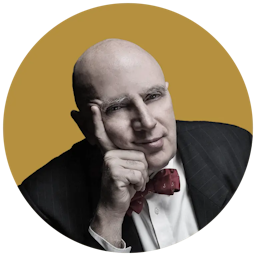Grunts, Growls & Squeals in Nine-Part Harmony
This article is from the archive of The New York Sun before the launch of its new website in 2022. The Sun has neither altered nor updated such articles but will seek to correct any errors, mis-categorizations or other problems introduced during transfer.

Every new movement in jazz brings with it an expanded range of possibilities. After the rise of the avantgarde 40 years ago, musicians – and saxophonists in particular – were allowed to do more with their instruments than ever before. All sorts of grunts, growls, squeals, and split tones became part of the accepted and, eventually, expected vocabulary of the saxophone. To hear one soloist who really knows how to use this vocabulary is a beautiful thing; to hear nine saxophonists doing it at once, in perfect synchronization, can be awe-inspiring.
That sums up the joy of hearing the Odean Pope Sax Choir, which is celebrating its new album, “Locked and Loaded” (Half Note Records), this week at the Blue Note, the venue where the album was recorded live in December 2004. Mr. Pope, who was born and is still based in Philadelphia, was long known for his collaboration with the great drummer Max Roach, to whom he is dedicating this week’s performance. He put together the first incarnation of the Sax Choir almost 30 years ago, and the current edition boasts four tenors, four altos, and a baritone, plus a three-piece rhythm section.
These nine talented saxophonists are stop-on-a-dime precise, in the oldschool tradition of Count Basie’s socalled “New Testament” band. But their solos are resolutely postmodern, and they eschew the big band tradition of call-and-response ensemble playing. As individuals and as an ensemble, the choir is most profoundly influenced by John Coltrane.
At the Blue Note on Wednesday night, the Sax Choir played two compositions by the late jazz messiah: the fast and furious “Giant Steps,” one of Coltrane’s most reinterpreted compositions, and something called “Coltrane Time,” which is credited to Coltrane but which, to the best of my knowledge, he never recorded. These are two fast and furious pieces; “Giant Steps” has long stood as a benchmark test to see how fast tenors can play, and “Coltrane Time” is a brief but insistent, hard-hitting melody that makes the choir sound like nine Coltranes coming at you all at once. (The album contains a third Trane composition, the lovely, lyrical “Central Park West” from 1960.)
The Sax Choir began the set with “Muntu Chant,” the last track on the album. The song refers to an African prayer for world peace, but you wouldn’t have known that were it not for Mr. Pope’s spoken intro. This “chant” sounded more like an exuberant, polyrhythmic dance number than a solemn hymn. The second piece, “Lotus Lady,” also drew on an exotic feel ing and an unfamiliar 6/4 groove.
Most of Mr. Pope’s arrangements begin with a melodious, mantra-like statement of the main theme by the eight-sax ensemble, playing in tempo but without the rhythm section. When the soloist enters, he first works unaccompanied, playing an intense, breathless solo. In some of the Choir’s arrangements, Mr. Pope has the soloist and the ensemble working together harmoniously; on other songs, the solo will be sharp and jagged while the background is smooth and mellifluous.
Three big-name saxophonists gueststar on the CD: Joe Lovano, James Carter, and Michael Brecker. Mr. Brecker’s role is particularly significant, since this session occurred shortly before the great saxophonist’s battle with MDS (myelodysplastic syndrome), which has temporarily halted his career. On the album, Mr. Brecker stars on “Coltrane Time” and on a Pope original called “Prince Lasha,” which is dedicated to the pioneering free-jazz saxophonist.
At the Blue Note, the 75-year-old Mr. Lasha, whom I have not seen in a New York club in many a season, served as guest for the final number, “Phrygian Love Song.” Playing baritone sax, Mr. Lasha produced a memorable solo in which he started low and built up to a series of incredibly high altissimo squeaks. Coupled with the Latin rhythms the Saxophone Choir was essaying, this gave the piece something of a Sun Ra groove. At one point, Mr. Pope played a lick that sounded like it was paraphrased from “Thanks for the Memories.” Thanks, indeed.
The Odeon Pope Sax Choir will perform with the David Murray Quartet until April 9 (131 W. 3rd Street, between Sixth Avenue and MacDougal Street, 212-475-8592).

